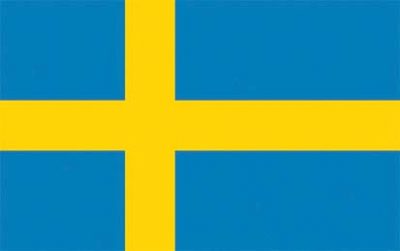
 Stockholm is known as the ‘Queen of the Baltic’ for the beauty of its surroundings, especially of the Stockholm Archipelago. It lies on the east coast of Sweden, where the waters of Lake Malaren flow into the Baltic Sea. There are over 30,000 islands in the archipelago, and many ancient fishing villages, coves and pretty beaches in a big area that stretches from Grisslehamn in the north to Landsort in the south. One has to be born and bred in this archipelago area to know all of its secret channels and waterways. Russian submarines infiltrated these secret channels during the Cold War, leading to incidents with the Swedish Navy. Ice is the major problem in winter with pack ice drifting down from the Gulf of Bothnia. The Swedish Maritime Administration employs five icebreakers, Ale, Atle, Frej, Oden and Ymer, in the Gulf of Bothnia and ports further south in order to keep open the four channels into Stockholm port for the slow moving convoys of tankers and general cargo ships.
Stockholm is known as the ‘Queen of the Baltic’ for the beauty of its surroundings, especially of the Stockholm Archipelago. It lies on the east coast of Sweden, where the waters of Lake Malaren flow into the Baltic Sea. There are over 30,000 islands in the archipelago, and many ancient fishing villages, coves and pretty beaches in a big area that stretches from Grisslehamn in the north to Landsort in the south. One has to be born and bred in this archipelago area to know all of its secret channels and waterways. Russian submarines infiltrated these secret channels during the Cold War, leading to incidents with the Swedish Navy. Ice is the major problem in winter with pack ice drifting down from the Gulf of Bothnia. The Swedish Maritime Administration employs five icebreakers, Ale, Atle, Frej, Oden and Ymer, in the Gulf of Bothnia and ports further south in order to keep open the four channels into Stockholm port for the slow moving convoys of tankers and general cargo ships.
The four channels into the port are:-
- The main channel of length 57 miles from the outer islands of Arholma, Soderarm and Furusund lead in a north east to south west direction between the mainland to starboard and the island of Ljustero to port when entering port. Several ‘dogleg’ turns are then required to negotiate around islands to reach the main port area in Saltsjon and Little Vartan of Varta Harbour, the latter having many oil wharves, the container terminal and the free harbour as well as the Tallinn Silja Line terminals for ferries from Finland and Estonia. This city centre terminal is only 15 hours sailing from Helsinki, 11 hours from Turku and 10 hours from Tallinn. The Viking Line ferries from Finland also have their own city centre ferry terminal at Stadsgarden on the Saltsjon. Varta Harbour leads off the Saltsjon in a northerly arm of Stockholm harbour.
- The island of Sandhamn due east from Stockholm provides the starting point of a second main channel of length 43 miles into the port. The passage cannot be used during the hours of darkness by tankers of greater than 10,000 dwt and other ships of more than 175 metres (575 feet) in length due to the high risk of running aground on the many small skerries and islands. At least one tug must accompany all ships of greater length during daylight hours.
- The Outer Landsort Channel from the southern Baltic Sea via Dalaro is 81 miles in length with a maximum permissible draft of twelve metres, length of 213 metres and moulded beam of 32.6 metres.
- The Inner Landsort Channel via the Sodertalje Canal and Lake Malaren has a length of 56 miles, and is navigable by vessels up to six metres in draft, but special permission may be given for deeper draft vessels depending on the water levels in Lake Malaren. The main link between the Baltic and Lake Malaren is at Hammerbyleden, which has a lock for vessels up to 360 feet in length and 49 feet moulded beam and six metres in draft.
History Of Stockholm
Gamla Stan is the name of the old city of Stockholm, located on the islands of Stads, Helgeands and Riddar. The church of Tyska Kyrkan on Svartmangatan is a German church that is an impressive reminder of the almost total influence that Germany had over Stockholm. The Hanseatic League was in control of the Baltic trade and its ports, which explains why the basic layout of Gamla Stan is an exact replica of that of Lubeck. The total political influence of Germany was only broken after the Stockholm Bloodbath of 1523 in the Stortorget, the square that is the heart of Gamla Stan, when eighty Swedish noblemen were executed, and which allowed the accession of Gustav Vasa to the throne of Sweden. The Hanseatic League influence, however, remained strong for a further three centuries as German merchants and craftsmen settled in the city to keep their strong mercantile and cultural influence alive.
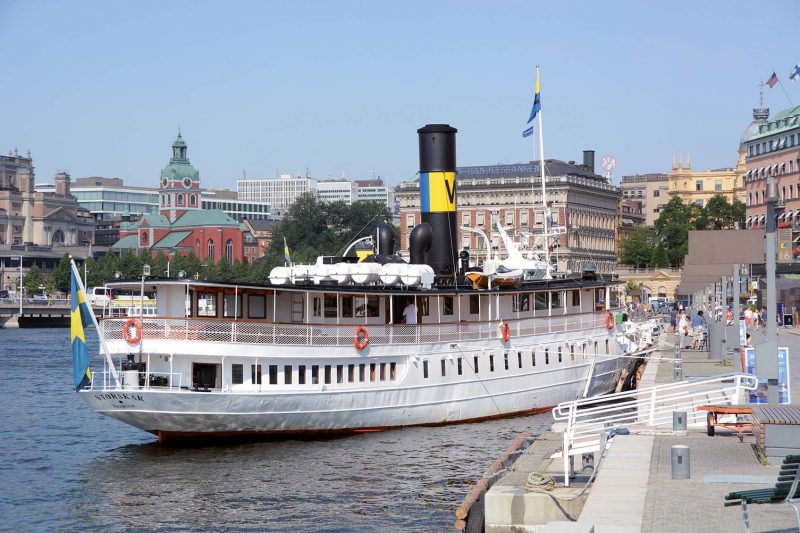
The present twin nave German church was built during 1638 to 1642 as an extension to a smaller church which the parish had used since 1576. It is of the ‘German Late Renaissance and Baroque’ style, the interiors having a royal gallery, added in 1672 for German members of the royal household. The pulpit (1660) is of ebony and alabaster and is unique in Sweden, and the altar of 1640 is covered with beautiful paintings surrounded by sculptures of the apostles and evangelists. Sculptures of three figures portraying ‘Faith, Hope and Love’ on the south porch of the church are by Jobst Hennen and date from 1643, and are alongside the figures of Jesus, Moses and other biblical saints. The Swedish Royal Palace, the Church of Saint Nicolas, the House of Lords, and the Stock Exchange are on Stads Island, while the Swedish Parliament and the Swedish National Bank are on Helgeands Island.
The Royal Palace of Kungliga Slottet on Gamla Stan was begun in 1697 on the ruins of the burned Kronor Castle, which was razed to the ground in the fire. The architect was court resident Nicodemus Tessin the Younger in an imposing ‘Renaissance’ style with 608 rooms and is the largest royal castle in the world that is still used for its original purpose. The Royal Family have lived here since 1754, and move the short distance to their summer residence of Drottningholm. The narrow cobblestone streets of Gamla Stan feature pastel coloured houses and are filled with tourists in summer.
Stockholm Archipelago Passenger Services
An extensive network of passenger services operate to all of the larger inhabited islands of the Stockholm Archipelago by Waxholmsbolaget, which is based at Vaxholm some 35 kilometres north east of Stockholm. Vaxholm is the capital and gateway to the archipelago and this charming village has long, narrow streets and unusual buildings to delight the visitor. Waxholmsbolaget operate from the Stromkajen in Stockholm for the benefit of both islanders and tourists, and can trace its company ancestry back to 1869 with daily all the year connections to the islands of the archipelago. This is also the public water transport operated on behalf of the Stockholm Regional County Council to all islands from Arholma in the north to Landsort in the south. This maritime equivalent of land public transport takes children from their archipelago communities to school, collects fresh produce and eggs from farmers and also delivers the daily newspapers, milk and grocery provisions.
Some four million passengers and 7,000 tonnes of freight are carried every year by a fleet of twenty vessels, with the steam powered vessels having tall black funnels with a central band of blue and yellow bearing a large black ‘W’. The white hulled sister steamboats of Norrskar and Storskar built in 1908/09 and of 238 grt are the ‘stars’ of the fleet and much patronised by the summer tourists to the archipelago. These classic sisters are filled to capacity on the open fo’c’stle and the twin old style covered decks, which serve Swedish smorgasbord or steaks and fish in their beautiful dining rooms. Tours are arranged to the north, middle and south of the archipelago, with the first stop after boarding at Stockholm being Vaxholm and then on to Grinda, Gallino, Ljustero, Saxafjardama, Ramsosund, Vasbystrand, Tynningo, Sandhamn, Svartso, Finnhamn, Husaro, Rindo, Dalaro, and other islands depending on the route that is sailed during their summer season of 20th June to 18th September.

Tickets cannot be reserved and are purchased on board on a ‘first come, first served’ basis so it pays to be a half hour early before sailing time on the Stromkajen. Tickets cost from around a reduced price of 100 kronor to 250 kronor depending on whether a morning, full day or evening tour is chosen to the north, middle or south islands of the archipelago. The fleet has both steam and motor vessels in the fleet with names such as Dalaro, Norrskar, Ramso, Skarpo, Storskar, Tynningo, Vastan and Waxholm.
Stockholm City Boat Tours
The city waterways to the east and west of the old city of Gamla Stan play an important part in the transport and tourism life of the city. Daily waterboat tours run to five destinations by Stromma Turism and Sjofart A/B (Stromma Tourism and Sightseeing):-
- Drottningholm Royal Palace located ten miles west of the old city on the island of Lovon, which is the home of the Swedish Royal Family for part of the year. The palace was built in the ‘Renaissance‘ style by architect Nicodemus Tessin the Elder, with work on the double fronted building and the beautiful parks beginning in 1662, about the same time as the Palace of Versailles near Paris. The Stromma Kanalbolaget boats take around one hour to reach the palace at Drottning Slott, with plenty of hours to tour the magnificent rooms before reboarding the boat back to Gamla Stan.
- Djurgarden, an island just to the east of Gamla Stan, which is a delight of trails for cycling and walking with cars almost entirely banned, and access by ferry only in summer. One of the plethora of museums, green spaces, parks, as well as a small zoo, on the island is the VasaMuseet, a custom built building to house the massive warship Vasa, the pride of the Swedish Navy, which sank on 10th August 1628 on its maiden voyage. The vessel, like the Mary Rose of the Royal Navy, was top heavy in design with a list developing to allow water to pour into her side openings, and she sank to the bottom of the Saltsjon in a matter of minutes with very few survivors plucked from the water. The museum has put this important vessel in historical context with restoration showing the whole ship, whereas only around half of the Mary Rose survives today in Portsmouth. Mary Rose sank on 19th July 1545 as the flagship of the fleet of Henry VIII sent into the Solent to face a French invasion fleet.
- Under the Bridges of Stockholm Tour with the tourist boats moving underneath the main road bridges of Gamla Stan to visit many of the nearby attractions.
- Historical Canal Tour departs hourly from Stromkajen near the Grand Hotel and a very short distance across a pedestrian bridge from Gamla Stan. The tour guides narrate in both English and Swedish, with other languages available on headsets.
- Royal Canal Tour also departs hourly from Stromkajen to all of the ‘must-see’ destinations, with tickets costing from 100 kronor to 190 kronor. The Museum of Modern Art on Skeppsholmen is one of the foremost showcases of 20th century painting and sculpture in Europe.
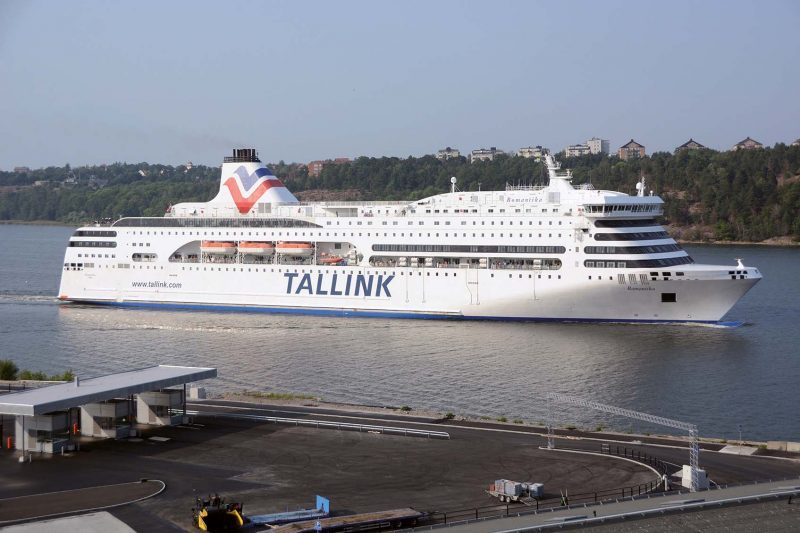
Stromma can trace its company ancestry back to 1809 and the start of a shipping business by Per Christian Rettig as P.C. Rettig & Company at Gefle (Gavle) to the north of Stockholm. Bore Lines Angfartygs A/B was begun as the Finnish subsidiary at Abo in 1897 for regular passenger traffic between Stockholm, Mariehamn and Turku. Services were also run in a consortium of three shipping lines of the Finnish South American Line. Passenger and cargo-liners such as Huanchaco of 5,602 grt, built by the William Beardmore yard on the Clyde in 1907, were purchased from the South American services of the Pacific Steam Navigation Company (PSNC) and renamed Bore VIII in 1926. She was taken over by Germany on 9th September 1940 and employed in the Baltic until she grounded on 24th February 1941 near Borkum and broke in two while on a voyage from Lulea to Emden. In post-war years, the twin funnelled ferry Bore of 3,878 grt was completed by the Oskarshamns yard in 1960 with accommodation for 1,100 passengers for regular passenger traffic between Stockholm, Mariehamn and Turku. Bore Shipowners A/B still operate regular ro-ro services today including on charter to P. & O. Ferrymasters into the Tees from the Continent.
The Rettig Group established Nya Angfartygs Stromma A/B in Stockholm in 1968 with the canal boats Drottningholm, Saxaret, Bjorkfjarden and Malardrott as the first steam powered boats of the fleet. Stromma City Sightseeing Stockholm was acquired in 1991, and today the Stromma parent company operates sightseeing tours in the canals and waterways of Amsterdam, Gothenburg, Malmo, Copenhagen, Helsinki, Oslo, Stavanger, Bergen and the beautiful fjords of Geiranger and near Alesund. Stromma Kanalbolaget was granted the Swedish Royal Court seal of approval and the accolade of quality in 1990 of ‘Kunlig Hovleverantor’ (Royal Supplier).
Commercial Traffic
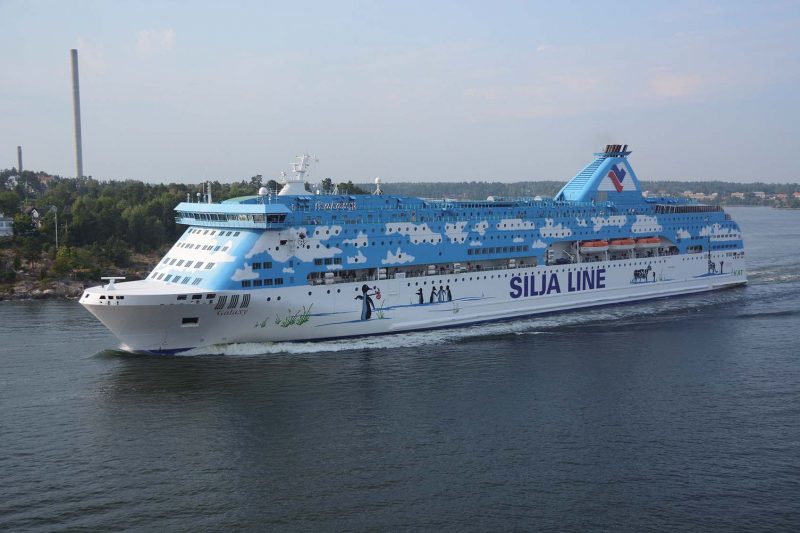
The Ports of Stockholm comprises three ports, Stockholm, Kapellskar to the north, and Nynashamn to the south. The City of Stockholm and Stockholm Hamn A/B are the port authority for all of the stakeholders of the Ports of Stockholm. Kapellskar is ninety kilometres to the north and offers passengers from Finland and Estonia a shorter sea crossing and a faster route by motorway into Stockholm than the ferries that wind their way through the archipelago into the centre of the port of Stockholm. Nynashamn is sixty kilometres to the south of the port of Stockholm, and has five berths at the refinery of Nynas Petroleum A/B, as well as one quay of 430 metres in length with good rail access and crane handling for passengers and dry cargo from the island of Gotland. The number of passengers and amounts of cargo per annum for Stockholm and its two outports in 2015 were:-
Stockholm |
Kapellskar |
Nynashamn |
|
| Pax | 9.108 m | 0.918m | 1.592 m |
| Freight | 4.637 Mt | 2.409 Mt | 1.295 Mt |

The totals for the three ports are thus 11.618 million passengers and 8.341 million metric tonnes of cargo handled at 14 kilometres of quays and 1.14 million
Stockholm Port

Stockholm Central Quays
There are eight quays in the old central city area, some to the east and some to the west of Gamla Stan:-
- Stadsgarden Quay are used by ferries and cruise liners, with a total quay length of 1,950 metres and includes ferry terminals, cruise terminals, double ramps for front loading ferries, and with all quays linked by a sophisticated rail network to reduce traffic congestion in central Stockholm.
- Skeppsbron Quay serves passenger ferries to Aland, archipelago and charter boats to Djurgarden, with a total quay length of 1,050 metres.
- Stromkajen Quay is used by archipelago boats and sight-seeing vessels.
- Nybrokajen Quay serves small cruise ships, naval vessels, archipelago boats, and boats to Djurgarden. Several quays of total length 550 metres.
- Strandvakskajen Quay are used by the archipelago boats and for tipping snow and ice clearance into the harbour. Several quays of total length 925 metres.
- Soder Malastrand Quay contains several berths of length 1,490 metres, used by private small vessels.
- Norra Malastrand Quay comprises quays 453-466 of length 720 metres for private vessels and for tipping snow and ice clearance into the harbour.
- Klara Malastrand Quay with a West Quay of length 65 metres and an East Quay of length 120 metres.
Loudden Oil Quays
Ten quays 701-710 handling inflammable oil products in Varta Harbour of total length 1,702 metres with eight or ten inch marine handling arms for refined products such as petrol, diesel, heavy fuel oil, pine tar oils, heating oil, paraffin, glycols, de-icer fluids and Avgas (Aviation fuel). Explosives are also handled and the maximum alongside depth is 9.9 metres.
Free Port (Frihamnen And Container Terminal)
Five quays of total length 1,796 metres in Varta Harbour to the north of the Loudden Oil Quays. Quay 1 has a length of 130 metres, Quay 2 has a length of 412 metres with a permanent ro-ro ramp between Quay 1 and Quay 2. Quay 3 has three grain silo loading facilities and a permanent ro-ro ramp between it and Quay 4. Quay 5 has a length of 462 metres and alongside depths of 7.5 to 9.0 metres. The Container Terminal is 220 metres in length with an alongside depth of 9.5 metres and is on the south side of the Freeport. The third biggest container line in the world, CMA-CGM of France, became a new customer at this terminal at the beginning of 2015, with second placed MSC already a customer, as well as Unifeeder, Team Lines and TransAtlantic Containers. Container throughput at Frihamnen in 2016 was 54,500 TEU, with regular callers including Flottbek of Reederei Hamburger Lloyd of 16,324 grt and 1,600 TEU capacity on charter to MSC.
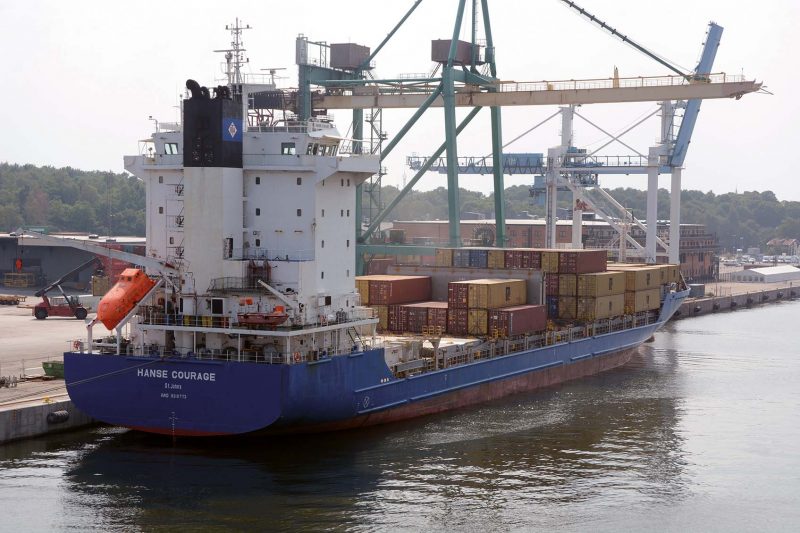
Vartahamnen Quays
Five quays of total length 2,520 metres handling the big passenger and vehicle ferries of Tallink Silja Line e.g. Silja Symphony, with a passenger capacity of 2,852 grt and a service speed of 23 knots from four Wartsila Vasa diesel engines, from Finland and Estonia using ro-ro ramps and double height vehicle loading ramps. Maximum alongside depths of 8.5 metres and there are also two rail tracks and a train ferry berth. Vartahamnen has been under construction since 2013, with the Varta Passenger Terminal designed by the architect firm of C.F. Moller and is a light and pleasant space for ferry passengers and was inaugurated on 18th October 2016. The Port of Vartahamnen is now known as Stockholm Royal Seaport with an area of 85,000 square metres created for development. It is also the site of the Head Office of the Port Authority of Stockholm Hamn A/B. Large passenger ro-ros such as the twin funnelled Finnclipper of Finnlines, built in 1999 of 33,958 grt, also berth here.
Hammarbyhamnen Quays
Two quays, Hammarbyhamnen North and Hammarbyhamnen South, located in the southern part of the Hammarby Sjo inlet from the Saltsjon, with the big Viking Line ferry terminal located near the entrance to Hammarby Sjo at Stadsgarden on the Saltsjon. The red hulled ferries Mariella and Rosella berth at this Viking Line terminal, with passenger capacities of 2,447 and 1,700 respectively. They have service speeds of 22 knots from four Wartsila Pielstick diesel engines. Viking Line was founded in 1959 with its first car ferry, and their fleet today have very good passenger facilities including entertainment and shopping. Hammarbyhamnen has eight berths of total length 2,790 metres with a private berth for Stockholm Hamnentrepenad A/B and very good rail links to the national rail network.

Stockholm Bulk Cargo
Several quays for the export of grain with the Lantmannen Farmers Association operating a grain exporting berth in the Freeport for grain originating from the Malardalen region of east central Sweden. Coal, biomass and energy raw materials are imported for the Hasselby Power Station, with the Cementa factory handling cement, and sand and road grit handled at the Jehander site, and building materials are handled at several of these quays.
Stockholm Cruise Terminal
A new Stockholm Cruise Terminal opened in 2008 at the Freeport on Varta Harbour, and currently handled 490,000 passengers in 2016 arriving on around three hundred cruise liners of all of the major cruise lines. Cruise liners can also moor in central Stockholm, to both the east and west of the old city, offering good vantage points to view very modern cruise liners against the backdrop of the old cathedrals, churches and the Royal Palace in the old city of Gamla Stan. Cruise lines calling include Aida Cruises, Celebrity Cruises, Cunard Line, Disney Cruise Line, P. & O., Princess Cruises, Viking Ocean Cruises, Regent Seven Seas, Oceania Cruises, Holland America Line, Fred. Olsen, Saga Cruises, Seabourn Cruise Line, Silversea Cruises, Royal Caribbean International and many more. The new flagship of P. & O. Lines, Britannia, arrived in Stockholm on 5th June 2015 for the first time. The latest cruise liners of Royal Caribbean International and other lines also berth at a new retractable, manoeuvrable floating pier at Nynashamn completed in 2016.
Kapellskar Port
Kapellskar is the most northerly of the three Ports of Stockholm, located ninety kilometres north east of Stockholm, twenty kilometres east of Norrtalje and ninety kilometres east of Uppsala. Its position is 59-43 North, 19-04 East with a direct E18 motorway running all of the way to Stockholm. A shorter transit time across the Baltic to Finland, Estonia, Russia and the Baltic States has made this a favourite port of embarkation and disembarkation for many travellers since the early 1960s. These shorter distances compared to central Stockholm include only 36 miles to Mariehamn in the Aland Islands, 113 miles to Nadendal and Abo, 120 miles to Nystad, 130 miles to Rauma, Hango and Osel, 156 miles to Paldiski, 176 miles to Tallinn and Ventspils, 196 miles to Helsingfors, 256 miles to Kotka, 266 miles to Riga, 305 miles to Ust-Luga and 345 miles to St. Petersburg. The Viking Line ferry Kapella was named in honour of the port of Kapellskar.
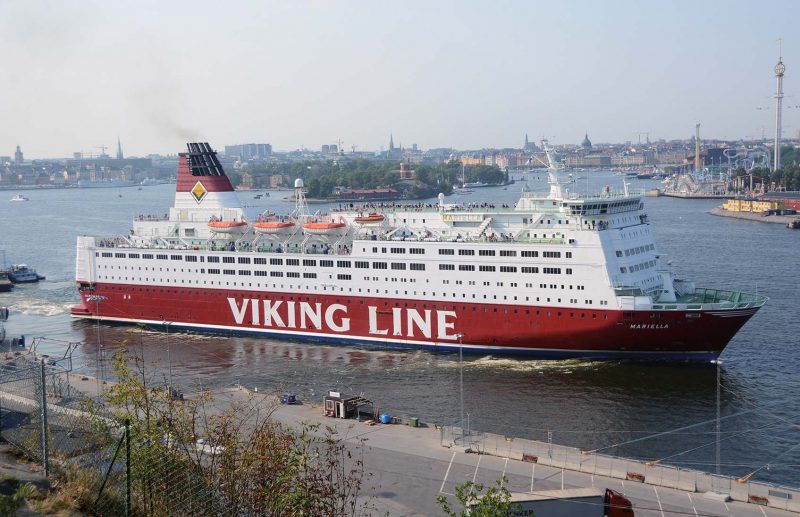
After two and one half years of construction, Kapellskar port in 2016 now has five ro-ro berths instead of the four berths that were built in the 1960s and 1980s. The passenger and freight ro-ros that call today are much larger, and thus the five berths are now:-
- Berth 1 for ro-ros up to and over 200 metres in length for traffic to Finland and Estonia
- Berth 2 for ro-ros up to and over 200 metres in length for traffic to Finland and Estonia
- Berth 3 has a length of 130 metres, alongside depth of seven metres for traffic to and from the Aland Islands and Estonia
- Berth 4 has a length of 200 metres, alongside depth of nine metres for traffic to and from Finland and Estonia
- Berth 5 has a length of 200 metres, alongside depth of nine metres for traffic to and from Finland and Estonia.
Nynashamn Port
The port of Nynashamn is located sixty kilometres south of Stockholm, and has three berths for traffic on Gotland ferries to Visby on the west coast of Gotland, Polferries to Gdansk in Poland, and Stena Line to Ventspils in Latvia. Gotland in summer is served by up to six ferries daily, Gdansk by three ferries per week, and Ventspils by six ferries per week. The ferry company of Gotlandbolaget was founded in 1865 as Angfartygsbolaget Gotland, and in the inter-war years a fleet of six small passenger ferries of up to 850 grt ran to the island in Gotland, Visby, Drotten, Gute, Hansa and Thjelvar. Gotlandbolaget moved up into fast big ferries with accommodation for one thousand passengers in 1972/73 with the sisters Gotland and Visby of 6,673 grt and built in Jugoslavia for Stena Line. They were sold shortly after completion for the Gotland run, and both were then chartered out to numerous operators. Gotland eventually became Duc de Normandie for Brittany Ferries in 1988 then Corsica Victoria for Corsica Ferries and today sails as Sardinia Victoria for Sardinia Ferries. Her sister Visby was renamed Drotten in 1980 and then sold in October 1985 to Corsica Ferries to become Corsica Viva II, and was rebuilt with extra accommodation in 1989 and renamed Corsica Regina. Today, she sails with her sister for Sardinia Ferries as Sardinia Regina.
Today, two thirds of the current 2,400 shareholders of Gotlandbolaget are residents of Gotland. Large passenger ferries and fast modern wave piercers have accommodation for between 700 to 1,500 passengers, and include the chartered sisters Gotland and Visby of 29,746 grt, the high speed (32 knots) Gotlandia and Gotlandia II, and the freight ro-ro Gute with a lane length of 969 metres.
Nynashamn also receives tanker traffic to the Nynas Petroleum refinery to the north of the ro-ro port with five oil berths, which used to receive crude oil and then export refined petroleum products. The refinery was built in 1928 in the same year as the company was founded, but changes in world crude oil production saw the refinery move over to the production of napthenic speciality oils in the 1970s. Hundreds of millions of Swedish kronor have been invested in the refinery during the last decade to modernise the Nynas refinery with a new sulphur treatment facility, and the refinery is now powered by natural gas.
Nynashamn also receives the very large international cruise liners that are not able, or do not wish to go through, the narrow channels of the archipelago into Stockholm. The railway to Stockholm was built in the early years of the port, and there is good rail access of 430 metres in length in the port as well as road access to the main VAG73 road from the three berths at Nynashamn, which are as follows:-
- Berth 1 has a length of 200 metres, alongside depth of eight metres, for the smaller ro-ros to Gotland
- Berth 2 has a length of 170 metres, alongside depth of seven metres, for the smaller ro-ros to Gotland
- Berth 3 has a length of 200 metres, alongside depth of nine metres for ro-ros to Gdansk in Poland and Ventspils and Liepaja in Latvia
The very largest international cruise liners in the world now berth at a unique ‘Seawalk’ pier that is both retractable and manoeuvrable. The ‘Seawalk’ floating pier was completed in 2016, and when a cruise liner is not in port it is retracted back to the shore. When a cruise liner approaches the port, the floating pier is extended out towards the vessel similar to an extended measuring rule, to which the cruise ship can tie up alongside. This allows passengers and luggage to be disembarked and embarked, with small ‘buggies’ and vehicles able to drive along it. The floating pier is 260 metres in length, takes ten minutes to extend itself, and floats on ten pontoons, each of which measure ten metres in diameter. The outer section is 5.5 metres wide and the inner section 4.5 metres wide, and the pierhead has a turning circle of 9.5 metres in diameter with an electric motor inside to extend the pier. The pier weighs around 450 tonnes, has freshwater and waste water pipes running underneath, and the mooring equipment can be used in moderate wind speeds.
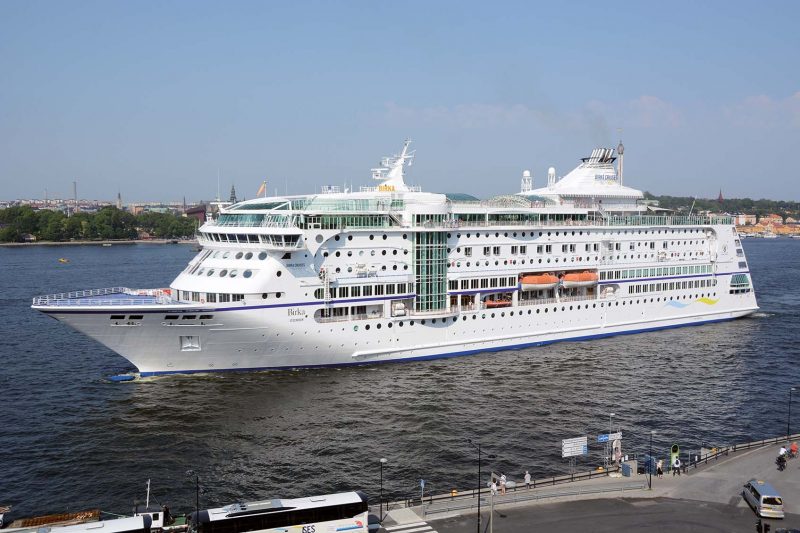
Stockholm Norvik Port
Stockholm Norvik Port is the Baltic Sea freight port of the future and is being built at Norvikudden, around fifteen kilometres to the north of Nynashamn. This will increase the importance of the Nynashamn area, which has the advantage of a fast rail link into Stockholm which the new port will also use. The new port will have seven quays of a total length of 1,400 metres with an alongside depth of 16.5 metres and a sixty hectare storage area for containers and trailers, as well as a business park. This new freight port is needed for the following reasons:-
- Stockholm Port is fast outgrowing its present facilities and a new port is needed for the efficient supply of goods and passengers to the central Stockholm area.
- Container and ro-ro ship sizes and volumes are increasing all of the time, and Stockholm Norvik Port will meet the needs of the largest of these types of ship. These modern ships have deeper drafts, longer lengths and need bigger terminals with plenty of space. The access to the Stockholm Norvik Port is from the southern Baltic Sea and completely eliminates the need for large ships to navigate the narrow channels of the Stockholm Archipelago.
- The new port will comply with EU regulations to increase the proportion of sea transport in relation to the total amount of transported goods. The new and modern port will have direct motorway and rail access into Stockholm, and will use the latest port handling equipment to be very efficient. Port construction began on 16th September 2016 when the first spade of earth was dug from the ground, with completion expected in late 2020.
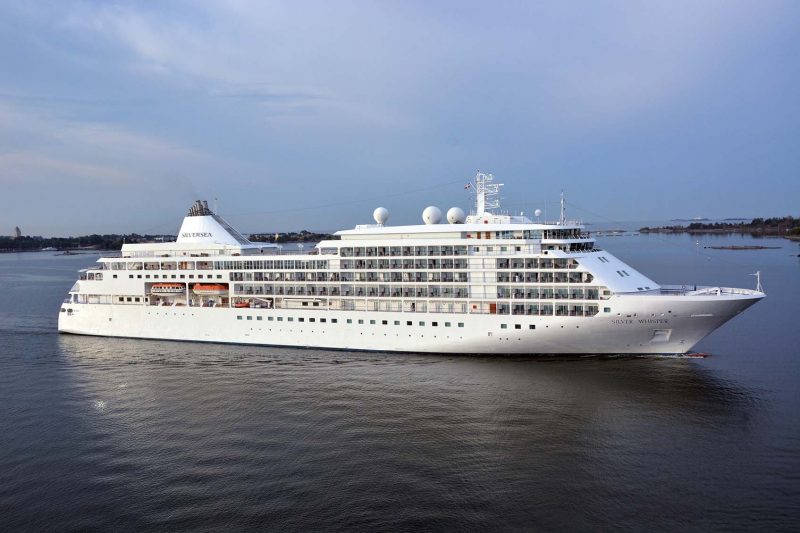

Postscript
The three ports of Stockholm, Kapellskar and Nynashamn, together with the new port of Stockholm Norvik, will ensure that the capital of Sweden is well served by sea for freight and passengers arriving at one of the world’s most beautiful destinations. Stockholm is pollution free and a city of history, culture, art, music and entertainment. The solar panel systems on the warehouse roof at Frihamnen (Free Port) formed the backdrop for a Government media release and television programme on climatic control. Kapellskar and Nynashamn Ports also have solar panel installations on their warehouse roofs. The Ports of Stockholm are thus technically efficient and well run as befits the capital of Sweden, which prospered from neutrality during World War II and has continued to do so in post-war years. It remained a leading member of the Baltic Council of Nations, but stayed outside NATO and the European Community, but joined the latter in 1995, and has advanced systems of social security and State pensions that have long been the envy of most European countries.

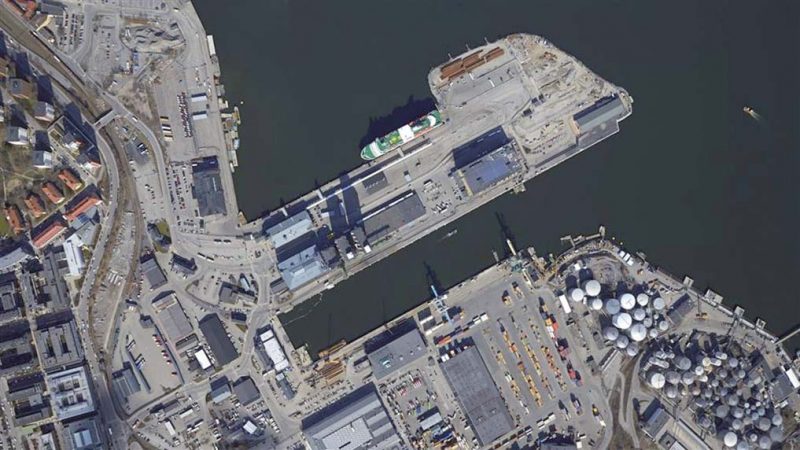
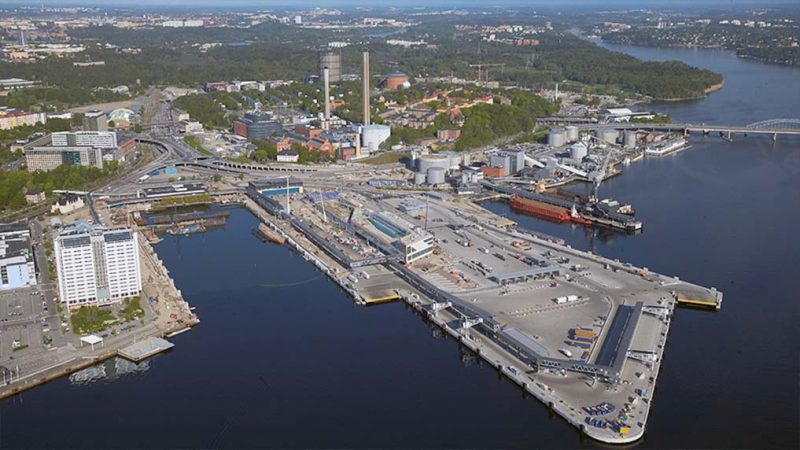

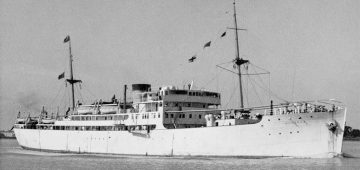



Comments
Sorry, comments are closed for this item